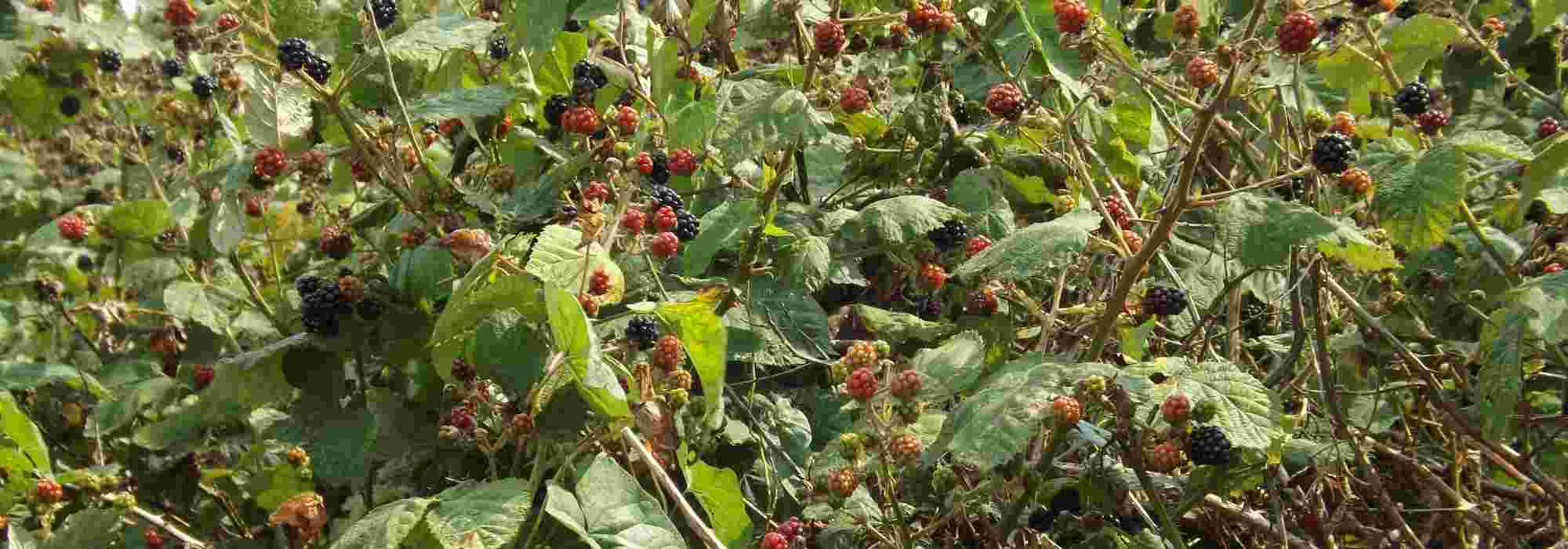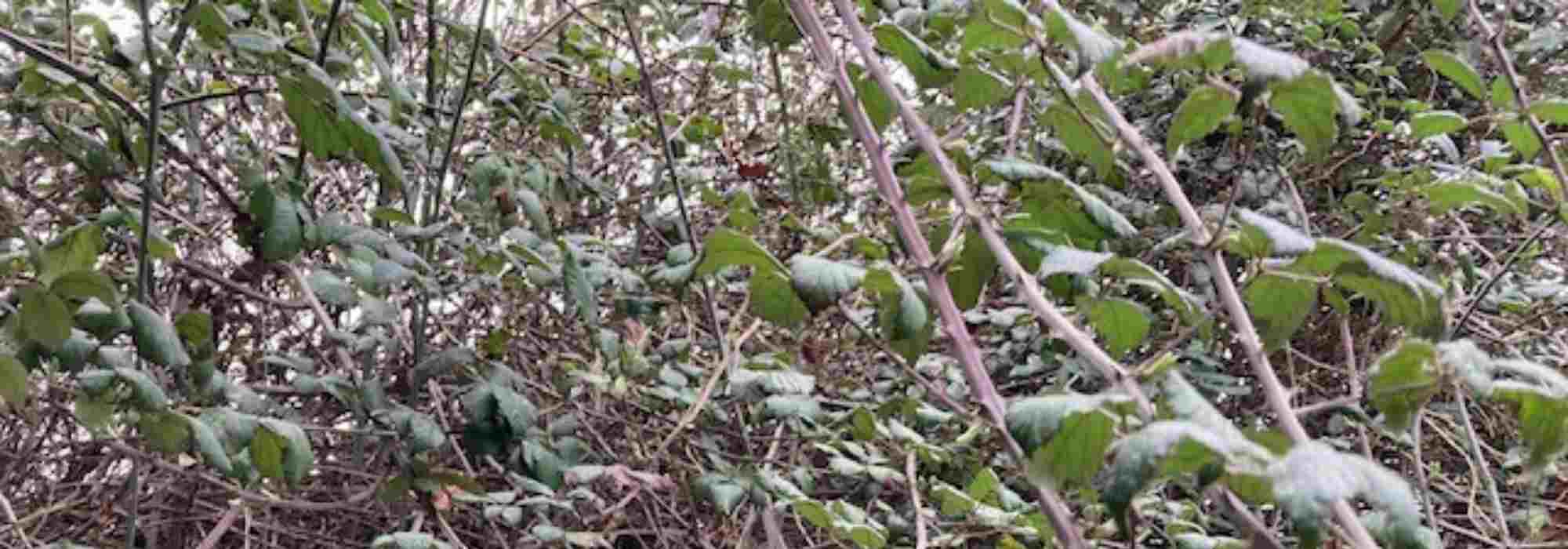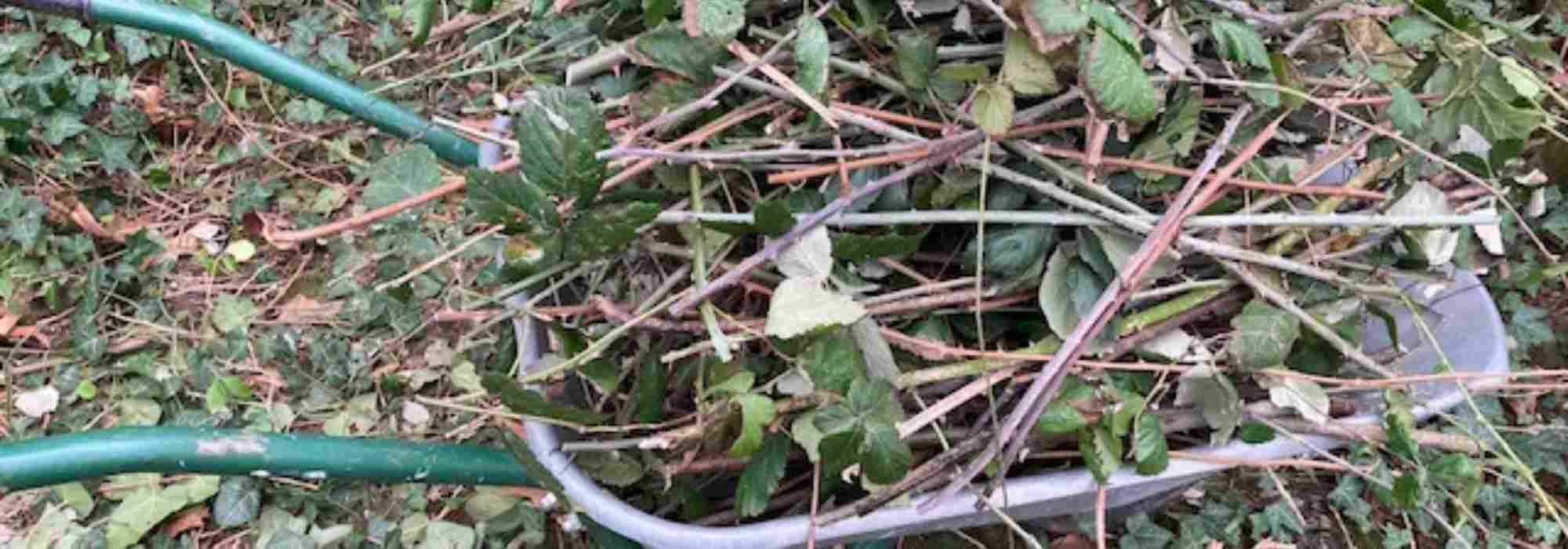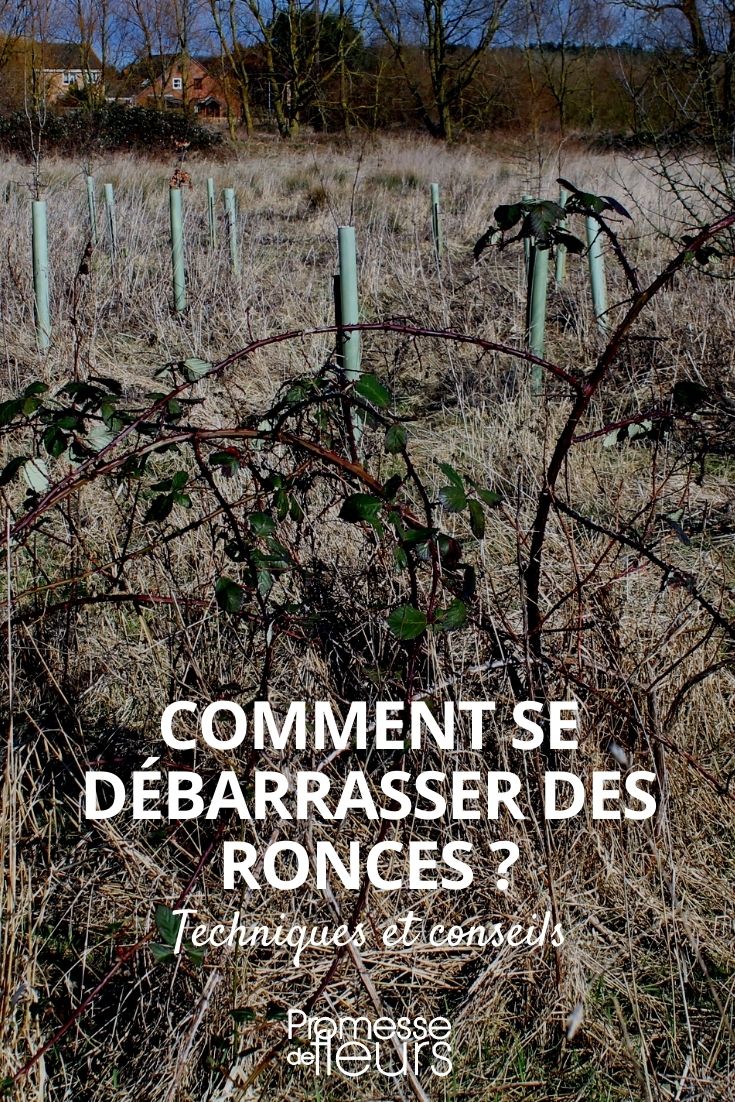
How to clear an area of brambles?
Essential techniques and tools to remove brambles naturally
Contents
Bramble is a spiny bush that produces delicious small fruits: blackberries. Many wild blackberry bushes or bramble thickets grow spontaneously in nature and are actually very useful: melliferous flowers, shelter and food for biodiversity, natural protective barrier, …
But bramble naturally reproduces by layering. Its lianas quickly form new roots in the soil and the bush can become very invasive in gardens.
Whether in a tended garden where bramble starts to take over vegetable patch and ornamental beds, or on fallow land, how to clear an area of brambles ? Let’s see what steps to follow to eradicate brambles and what equipment to choose for safe clearance.

Brambles can very quickly take over an entire area of the garden
When to clear brambles?
Late autumn and winter are best times for tidying: garden is resting and requires almost no maintenance, freeing up time to tackle clearing a bramble patch.
Bramble, like most plants, is also in dormancy. Its growth is halted while it waits for return of fine weather and its awakening into flowering around May.
Clearing brambles at this time of year also prepares garden for future spring plantings, whether in vegetable patch or ornamental beds.
Getting rid of brambles naturally
We know chemical weedkillers are harmful to both environment and living beings. The ideal is therefore to turn to an eco-friendly yet effective weed control solution.
The most natural method would be to hire a few goats, veritable brushcutters on legs, which feed on many plants including brambles. But this option is obviously only feasible for clearing a large area and on a fully fenced site.
Cutting, then extracting bramble patch remains the most suitable clearing method for most areas. It requires patience and energy, since any forgotten stem will happily proliferate. Furthermore, several passes will almost certainly be necessary to get rid of brambles for good, depending on size of area to be cleared.
But this is the most radical and natural method to clear a bramble patch in a few weeks.
Steps to clear a bramble patch
- Cut all aerial parts of the bush right down to soil level, working from top of the bush downwards.
- Turn over soil to expose and remove roots, which are usually well developed.
- Dig a hole 30 to 50 cm around the plants to extract them; if roots are too deep to remove, dig into centre of root to expose it, which should exhaust the bush.
- Check area regularly and repeat operation at any sign of new shoots from soil in following days.
- Lay a black tarpaulin, waterproof and opaque over whole area to treat: deprived of light and air, brambles will no longer develop and any remaining roots will wither.
The tarpaulin will also help warm soil for future sowing and spring planting.

Some complementary techniques can help weaken bramble patch faster: adding salt, bicarbonate or boiling water (pasta or potato cooking water rich in starch) directly onto stems to be eliminated.
Use these techniques only if bramble area is far from cultivated zones.
Cutting tools needed to eliminate brambles
Using right tools makes bramble removal less arduous.
Tools should be suited to size of area to clear and size of bramble to eradicate.
- For large fallow areas to clear, an electric brushcutter with blades will be ideal for cutting brambles. Take care with stones or low walls hidden by bushes, which could damage tool blades.
- For medium-sized areas to clear, two tools can be used.
- A scythe fitted with a short, thick blade, which allows neat, quick clearance of the toughest plants and young woody growth. Quiet, non-polluting and durable, scythe is also less dangerous than modern power tools, although it takes some practice to master.
- A shears or hedge trimmer. These large scissors allow cutting of green shoots and foliage of hedge bushes. Ideally choose handle with non-slip grip and stainless steel blades.
- To remove a young small bramble, a good pruning shear with bypass blades, suited to cutting live green wood, may suffice. It should fit shape of your hand and be chosen for right- or left-handed use.
- Finally, a spade is essential for digging soil and removing roots. A louchet spade, a type of spade with a long narrow blade, is particularly suitable for pulling out trees and bushes with extensive root system, in heavy sticky soils. A lifting spade also enables uprooting and removing shrubs and hedge plants, while minimising user effort. It can dig any type of soil to depth and slice through roots in one go.
Protective equipment to avoid injuries
It is essential to be well equipped before tackling bramble clearance. Besides bush thorns, use of tools can be dangerous without proper protective equipment.
- Wear latex brush-clearing gloves, synthetic thorn-proof gloves or leather brush-clearing gloves, which are very resistant and designed to prevent perforation. These gloves have long cuffs to protect forearms. Palm and fingers can be reinforced for extra safety during clearing. Finally, if using an electric brushcutter, opt for special heavy-duty shock-absorbing gloves suited to vibrating equipment.
- Wear sturdy clothing covering arms and legs well to avoid risk of puncture.
- Use safety glasses to prevent plant debris entering eyes.
What to do with green waste after clearing brambles?
Bramble green waste will be taken to a recycling centre, to avoid any risk of renewed proliferation.
Using it as mulch or in compost after shredding carries a risk of new shoots regrowing and the bramble patch spreading.
As a reminder, except for exemptions in some cases and regions, burning green waste in the open air or in a garden incinerator is generally prohibited, because of toxic substances that can be released and the nuisance caused to neighbours.

Gather all your prunings and waste, and take them to a recycling centre
- Subscribe!
- Contents
































Comments